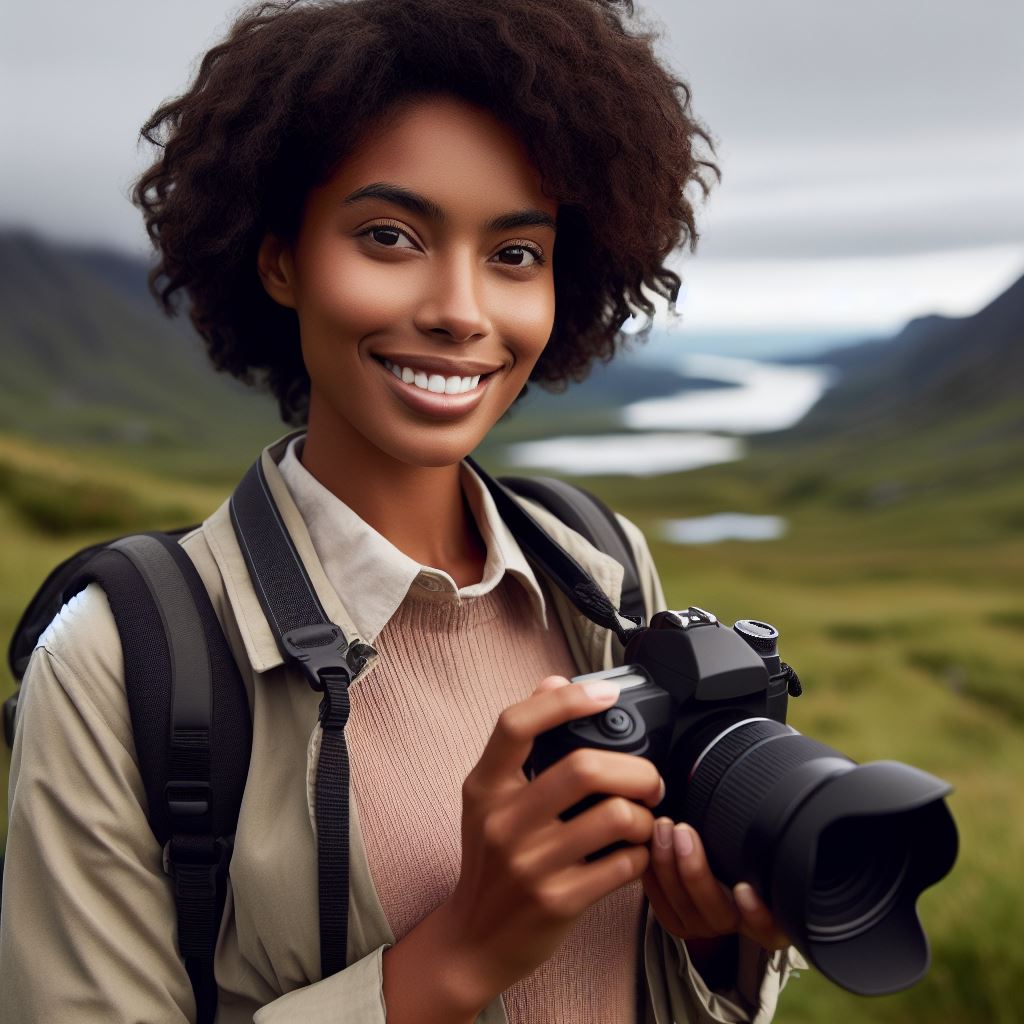Introduction
A. Landscape photography in New Zealand
Landscape photography in New Zealand is a captivating art form, showcasing the country’s diverse and stunning natural beauty.
Capturing the essence of these landscapes is not just about taking pictures; it’s about preserving moments in time and sharing the beauty of New Zealand with the world.
B. Importance of Capturing NZ’s Landscapes
- Preservation of Natural Beauty: Landscape photography immortalizes the beauty of New Zealand’s landscapes, preserving them for future generations.
- Promotion of Tourism: Stunning landscape photographs attract tourists, boosting the tourism industry and supporting local economies.
- Environmental Awareness: Through photography, people become more aware of the importance of conserving New Zealand’s natural environment.
- Cultural Heritage: Photographs of landscapes hold cultural significance, reflecting the history and identity of New Zealand’s indigenous Maori culture.
- Inspiration and Appreciation: Viewing landscape photographs can inspire awe and appreciation for the natural world, encouraging conservation efforts.
- Educational Purposes: Landscape photographs serve as educational tools, teaching people about the geography and geology of New Zealand.
- Artistic Expression: Landscape photography allows photographers to express their creativity and vision, creating unique and beautiful works of art.
Basically, landscape photography plays a vital role in capturing and preserving the beauty of New Zealand’s landscapes, making it an invaluable art form.
The Allure of New Zealand’s Landscapes
New Zealand boasts diverse landscapes, including majestic mountains, lush forests, tranquil lakes, and pristine beaches.
Each offers a unique charm, captivating visitors with its natural beauty.
- Mountains: The Southern Alps stretch across the South Island, featuring stunning peaks like Mount Cook.
These rugged giants create dramatic backdrops for photos, especially during sunrise and sunset. - Forests: New Zealand’s forests are rich in biodiversity, with native species like kauri and rimu.
The dense foliage and towering trees create a mystical atmosphere, ideal for capturing enchanting scenes. - Lakes: The country is dotted with picturesque lakes, such as Lake Tekapo and Lake Wanaka.
Their crystal-clear waters reflect the surrounding mountains, creating stunning mirror-like images. - Beaches: New Zealand’s coastlines are renowned for their pristine beauty.
From the golden sands of Abel Tasman to the rugged cliffs of Piha, each beach offers a unique perspective for photographers.
Landscape photography allows us to appreciate the beauty of these environments while also highlighting the need to preserve them.
By capturing these landscapes in photos, we can share their allure with others and raise awareness of their importance.
In essence, New Zealand’s landscapes offer a mesmerizing blend of beauty and diversity.
From the soaring mountains to the tranquil lakes, each scene is a testament to nature’s grandeur.
Through landscape photography, we can capture these moments and ensure that future generations can continue to marvel at their splendor.
Read: Breaking into NZ Photography: A Starter Guide
Popular Locations for Landscape Photography
A. Iconic and picturesque locations for landscape photography in New Zealand
In New Zealand, there are numerous iconic and picturesque locations that offer stunning landscapes for photography.
Some of the most popular ones include Milford Sound, Tongariro National Park, Lake Tekapo, and Abel Tasman National Park.
Milford Sound, located in Fiordland National Park, is known for its dramatic fjords, towering cliffs, and cascading waterfalls.
It offers breathtaking views, especially during sunrise and sunset, with the opportunity to capture the interplay of light and shadow on the water.
Personalized Career Consulting
Unlock your potential with expert career advice tailored to your goals. Get personalized guidance and actionable steps toward your dream career in New Zealand.
Get StartedTongariro National Park, a UNESCO World Heritage Site, boasts stunning volcanic landscapes and the famous Tongariro Alpine Crossing.
This location offers opportunities for capturing unique shots of volcanic craters, emerald lakes, and dramatic mountain ranges.
Lake Tekapo, with its turquoise-colored waters and stunning alpine backdrop, is a photographer’s paradise.
The area is particularly famous for its night sky photography, as Lake Tekapo is part of a Dark Sky Reserve, providing excellent conditions for astrophotography.
Abel Tasman National Park, located at the top of New Zealand’s South Island, is renowned for its pristine golden beaches, crystal-clear waters, and lush native forests.
Photographers can capture the park’s beauty by exploring its walking tracks or by taking a scenic boat trip along the coastline.
Each of these locations offers distinctive features and attractions that make them popular choices for landscape photography.
From the majestic cliffs of Milford Sound to the volcanic wonders of Tongariro National Park, these places provide a diverse range of subjects to capture.
B. Noteworthy photography challenges specific to these places.
However, photographing in these locations also presents unique challenges.
In Milford Sound, for instance, unpredictable weather conditions can make it difficult to plan and capture the perfect shot.
Being prepared for sudden changes in lighting and weather patterns is crucial.
In Tongariro National Park, the challenging terrain and changeable weather can be physically demanding for photographers.
It is essential to be well-prepared with suitable gear and clothing to ensure both comfort and safety while exploring the area.
Lake Tekapo poses challenges related to capturing night sky photography.
Transform Your Career with a Professional CV and Cover Letter
Stand out to employers with an ATS-optimized resume and tailored cover letter designed to match your dream role. Let us craft your job application materials for success!
Get StartedLight pollution, weather conditions, and the need for long-exposure shots require careful planning and patience to achieve the desired results.
Abel Tasman National Park offers its challenges in terms of capturing the right moment amid the park’s popularity and visitor activity.
Patience and timing are key to avoid capturing crowds and to find secluded spots that showcase the park’s serene beauty.
As landscape photography enthusiasts, visiting these iconic locations in New Zealand will undoubtedly provide endless opportunities to capture the country’s natural beauty.
From breathtaking fjords and volcanic landscapes to stunning lakes and golden beaches, these places are a treasure trove for photographers seeking to capture the essence of New Zealand’s diverse landscapes.
Read: NZ’s Top Photographers: Styles & Success Stories
Tips for Capturing Stunning Landscape Photos in New Zealand
A. The Importance of Planning and Research
Before embarking on a photography session in New Zealand, it is vital to engage in thorough planning and research.
Understanding the location and its unique features will greatly enhance the quality of your landscape photos.
Research different viewpoints, landmarks, and natural wonders, and make note of the best times to capture them.
Consider sunrise and sunset times for the most magical lighting.
B. Practical Advice on Composition, Lighting, and Angle Selection
Composition is key to creating stunning landscape photos.
Consider the rule of thirds and leading lines to create balance and depth in your images.
Experiment with different angles and perspectives to add interest and creativity to your shots.
Crouch down low or climb to higher ground for a different viewpoint.
Boost Your Career with a Standout LinkedIn Profile
Attract recruiters and expand your network with a fully optimized LinkedIn profile tailored to highlight your strengths and professional goals. Let your profile open doors to new opportunities!
Get OptimizedPay attention to lighting conditions. Early morning or late afternoon light creates a warm, golden glow that can add a magical touch to your photos.
C. The Significance of Patience and Waiting for the Perfect Moment
Patience is crucial in landscape photography, especially when waiting for the perfect moment.
Don’t rush; take your time to observe and analyze the scene.
Stay in a location for a while, allowing the natural elements to unfold before your lens.
Changes in weather, the movement of clouds, or the appearance of wildlife can add drama and interest to your photos.
D. Use of Filters, Tripods, and Other Equipment
To truly enhance the quality of your landscape photos in New Zealand, consider using filters, tripods, and other equipment.
A polarizing filter can reduce glare and deepen colors, while a neutral density filter can help achieve long exposures for silky smooth water or motion blur effects.
Investing in a sturdy tripod is essential for capturing sharp, detailed images, especially during low-light conditions or long exposures.
E. Encouraging Experimentation and Creativity
Don’t be afraid to step outside the box and experiment with different techniques and perspectives.
New Zealand’s diverse landscapes offer endless opportunities for creative expression.
Try playing with perspective by incorporating foreground elements or experimenting with different focal lengths to capture unique and compelling compositions.
Capturing stunning landscape photos in New Zealand requires a combination of technical knowledge, creativity, and patience.
The key is to plan, research, and be open to experimentation. Happy shooting!
Read: NZ Journalists: Reporting With Flair

Ethical Considerations in Landscape Photography
A. The importance of respecting the environment and local communities when photographing landscapes
Respect the environment and local communities when photographing landscapes.
- Preserve the natural beauty of New Zealand’s landscapes.
- Avoid disrupting the ecosystem and wildlife habitats.
- Minimize noise pollution to maintain the serenity of the surroundings.
- Obtain necessary permits and permissions for photographing in protected areas.
- Educate yourself about the cultural significance of the places you photograph.
B. The concept of leaving no trace and how photographers can minimize their impact
Embrace the concept of leaving no trace to minimize environmental impact.
- Pack out all trash, including small items like lens caps.
- Use designated campsites and trails to avoid damaging fragile ecosystems.
- Minimize footprints by staying on established paths and avoiding trampling vegetation.
- Refrain from altering the landscape for the sake of a photograph.
- Leave natural objects untouched to preserve the integrity of the environment.
C. Encouraging responsible behavior
Practice responsible behavior to ensure the longevity of pristine landscapes.
- Stay on designated trails to prevent erosion and protect delicate plant life.
- Avoid disturbing wildlife by maintaining a safe distance and using telephoto lenses.
- Refrain from feeding or approaching animals for the sake of a photo.
- Respect signs and regulations aimed at preserving the environment.
- Educate fellow photographers about the importance of ethical practices.
Essentially, ethical landscape photography in New Zealand requires a conscientious approach.
By respecting the environment and local communities, photographers can contribute to the preservation of these stunning landscapes for future generations to enjoy.
Read: Creative Non-Fiction: NZ Writers’ Take
Editing and Sharing Landscape Photos of New Zealand
Capturing the breathtaking landscapes of New Zealand is just the first step in landscape photography.
A. Post-Processing Techniques
Once you have your stunning shots, it’s time to enhance their visual appeal through post-processing techniques.
Here are some tips on editing and sharing your landscape photos:
- Adjusting exposure: Brighten shadows and darken highlights to achieve a well-balanced exposure.
- Enhancing colors: Use saturation and vibrance adjustments to make the colors pop, while keeping them natural-looking.
- Sharpening details: Apply selective sharpening techniques to bring out the fine details in your landscapes.
- Removing distractions: Use spot healing or clone stamp tools to remove any unwanted elements from your photos.
- Applying filters: Experiment with various filters like graduated neutral density filters or polarizing filters to create different moods in your images.
B. Recommended Software and Apps
Editing software and apps play a crucial role in perfecting your landscape photos.
Here are some popular tools:
- Adobe Lightroom: A comprehensive editing software that offers powerful tools for enhancing and organizing your images.
- Photoshop: Ideal for advanced editing techniques, including precise selective adjustments and compositing.
- Snapseed: An intuitive mobile app with a wide range of editing tools and filters.
- VSCO: Known for its stylish preset filters and advanced editing capabilities.
C. Benefits of Sharing Landscape Photos Online
Sharing your remarkable landscape photos online goes beyond personal satisfaction.
Here’s why you should consider sharing:
- Inspiring others: Your stunning images can motivate and ignite a passion for nature and photography in others.
- Promoting tourism: By showcasing the beauty of New Zealand, you can attract travelers and boost the tourism industry.
- Exchange of feedback: Online platforms allow you to receive feedback on your work, helping you improve your skills.
- Building a photography community: Connect with like-minded photographers who share your enthusiasm and passion for landscapes.
D. Importance of Crediting Locations and Acquiring Permissions
When sharing landscape photos, it is essential to respect the locations and obtain any permissions required.
Some key points to remember:
- Credit the locations: Mention the names of the places you photographed to give them recognition and encourage responsible tourism.
- Respect restrictions: Some areas may have specific rules or restrictions, such as no drones or limited access. Adhere to these guidelines.
- Obtain permissions: If necessary, seek permission from private property owners or authorities before sharing images taken on their land.
- Be mindful of sensitive areas: Certain locations may be environmentally fragile, so avoid sharing precise details that could lead to harm.
Editing and sharing your landscape photos of New Zealand can be an exciting and fulfilling journey, allowing you to showcase the country’s natural beauty to the world.
By following these tips and guidelines, you can create captivating imagery and inspire others to appreciate and preserve our stunning landscapes.
Conclusion
Landscape photography plays a significant role in capturing and sharing the breathtaking beauty of New Zealand.
Through this art form, photographers are able to immortalize the unique landscapes, from the majestic mountains to the stunning coastlines.
But it’s not just about capturing the beauty on camera.
It is essential for readers to personally explore and appreciate these incredible landscapes firsthand.
It is through experiencing the wonders of nature that one can truly understand and connect with their beauty.
However, as we indulge in the beauty of New Zealand’s landscapes, it is crucial to emphasize the importance of responsible and ethical behavior.
Photographers must respect the natural environments, ensuring their own actions do not harm or disrupt the delicate balance of nature.
Being mindful of our impact helps preserve these landscapes for future generations to enjoy.
So, let us all venture out and explore the diverse landscapes that New Zealand has to offer.
Let us immerse ourselves in the beauty of these natural wonders, appreciating their uniqueness, and capturing their splendor ethically.
Through landscape photography, we can continue to share the majestic beauty of New Zealand with the world, inspiring others to appreciate and protect these treasures.




